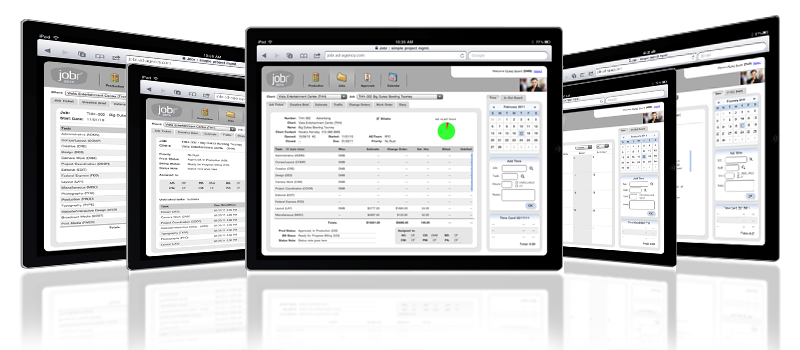|
|
Productivity FAQs
Summary: Answers to frequently-asked questions about tracking productivity with Clients & Profits.
Q. What are the productivity reports actually showing?
Productivity reports use time entries from time cards and time sheets to show how the shop's time is spent. The reports are run for a selected range of work dates (or posted dates, but not as meaningful for time as with accounting reports).
Q. Are both time card and time sheet entries included on productivity reports?
Yes. Productivity reports use time entries from time cards and time sheets to show how the shop's time is spent. Time from time cards and time sheets save to the same file in the database, so how time is entered has no impact on time based reports.
Q. Who uses productivity reports?
They are used by managers to analyze how agency and department time is being spent.
Q. How can productivity reports help me manage our shop?
Productivity reports can help you balance the work load. If one staff member is consistently logging more hours than other staff, you'll see it in their total hours. You can use this information to move work around, so that everyone is working more efficiently. As well, they can show you things like if the right people are working on the right clients. You want your higher-paid staffers to work on the most profitable clients to ensure they are satisfied as a client.
Q. Are productivity reports based on payroll?
No. Payroll journal entries affect only expense and cash accounts on the general ledger. Productivity reports are exclusively based on time entries from time cards and time sheets. In Clients & Profits, time is tracked for job costing and client billing reasons, not for payroll purposes.
Q. Why use Productivity reports instead of the time reports under Time Sheets?
Productivity reports only show total hours, not the individual time entries. This makes productivity reports much more concise. You will be able to see the big picture and analyze trends better with productivity reports. For more information on the time reports under Time Sheets please see the Time FAQs.
Q. What productivity reports should I run weekly?
There are two: the Missing Time report and the Weekly Time Summary. The Missing Time report lists each staff member by department showing their planned hours vs. their actual hours. It shows you who hasn't accounted for their time. The Weekly Time summary report shows total hours spent for each staff member and the jobs they worked on for a 7-day period, sub-totaled by department. This report lets you review what your staff has been working on for the last week.
Q. What productivity reports should I run monthly?
There are several, including the Unbillable Time Analysis, Billable/Unbillable Time Summary, Dept/Group Productivity, and the Profit Center/Staff Productivity. The Unbillable Time Analysis report compares the percentage of unbillable staff time by client. It shows which clients are receiving the most free services. The Billable/Unbillable Time Summary report compares billable to unbillable hours. This report shows you if too much agency work is unbillable and which staff are logging the most unbillable hours in total and by percentage. The Dept/Group Productivity report compares each staff member's total hours vs. their billable hours, known as their utilization (what percentage of their hours are billable hours). The staff members are subtotaled by department. The Profit Center/Staff Productivity report is similar to the Dept/Group Productivity report except that the staff members are subtotaled by profit center (assign a profit center to each staff member first).
Q. What reports should I run quarterly or annually?
There are two: the YTD Staff Utilization by Client and the Division/Client Productivity. The YTD Staff Utilization by Client report compares period vs. year-to-date staff time. This report shows by staffer the total hours spent working for a client, and how much of that time was actually billable. The Division/Client Productivity report analyzes total hours for each division and client. This report will let you see how many hours various divisions spent working on each client, and how much of that time was actually billable. You can use this report even if you don't use client divisions, each individual client will just display under Division "None".
Q. How are the cost totals on productivity reports calculated?
The cost and billable amounts are totaled from the individual time sheet and time card entries. If the cost or billable amounts seem strange, print a time report for the same range of work dates, and for all periods, to see the time details. The totals on the two reports should be the same, but the time report will break out the individual time entries.
Q. How long will the productivity reports take to run?
It depends on the date range, which determines the number of time entries being selected for the report. For example, printing the year's productivity will take much longer than printing it for a month. It's all based on the quantity of time entries being selected and analyzed. But the total time should be similar to printing a Time Sheets time report for the same date range, since it will pull the same records, the productivity reports just summarize the results instead of listings the individual time entries.
|
|




